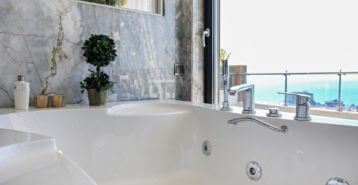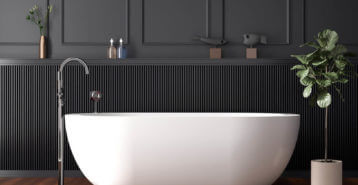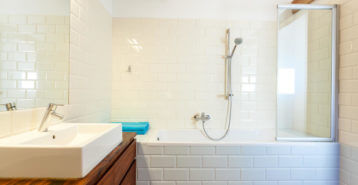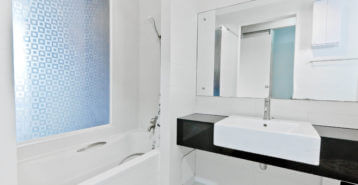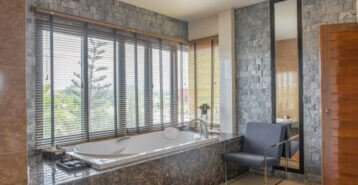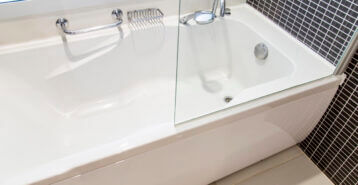A soaking bathtub is deeper – and often longer – than the average tub. Wondering if a soaking tub is a good choice for your own bathroom? We created this guide to answer all the questions you might have. On this page, we’ll cover soaking tub dimensions, the average soaking tub cost, plus the different types and materials you can choose from.
Let’s start at the beginning: just what is a soaking tub in the first place?
What Is a Soaking Tub?
A soaking tub is a deep bath designed for long, comfortable soaks. How can you tell if you’re looking at a soaking tub vs another tub type? Well, there are two main indicators:
- They are deeper than standard tubs, allowing you to immerse your entire body in water.
- Typically, soaking tubs are oval to allow for the bather to comfortably recline back. A select few manufacturers do make them in a rectangular shape. Japanese soaking tubs also come in a circular shape.
They don’t typically have jets or bubbles like a whirlpool tub, but instead focus on exactly what you would expect from their names: a good, long soak in deep water.
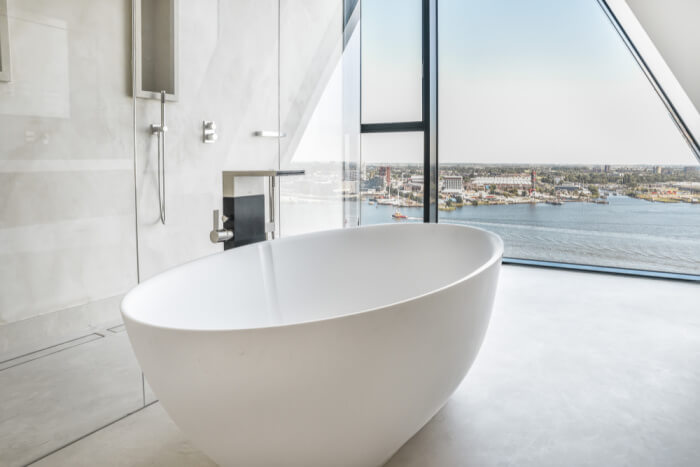
What Are Average Soaking Tub Dimensions?
Soaking tubs are deeper than standard tubs, and they can also be longer and wider.
- Length: Typically between 60 inches (5 feet) and 72 inches (6 feet).
- Width: Usually around 30 to 40 inches.
- Depth: Often between 20 and 24 inches. This depth allows most people to soak with the water covering most of their body.
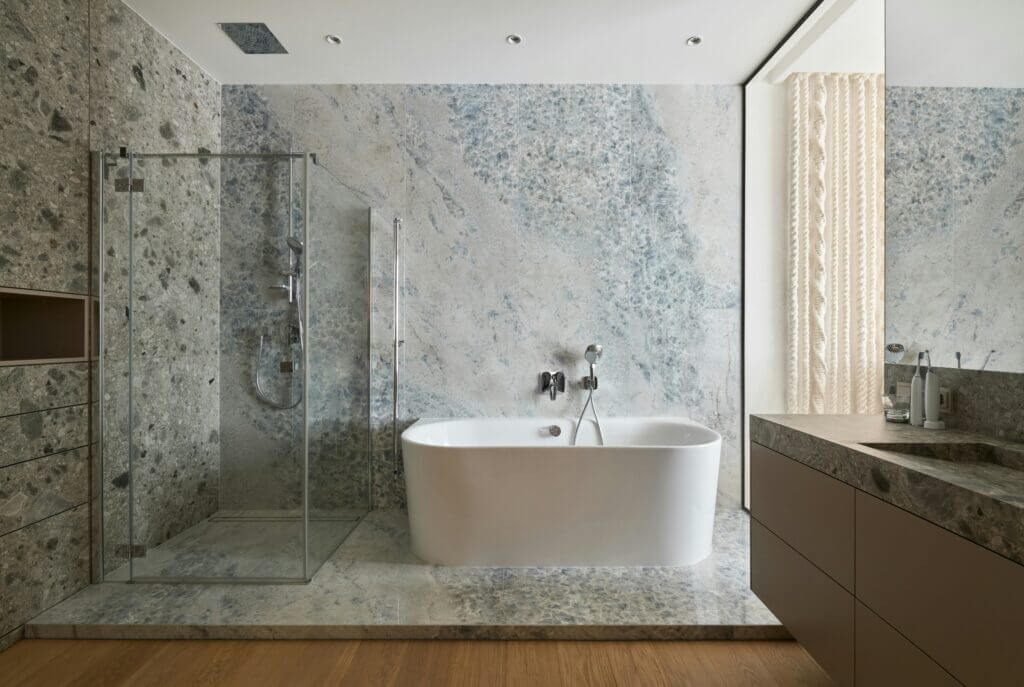
Here’s a table comparing soaking tub dimensions to a standard tub so you can see the difference.
| Dimension | Soaking Tub Range | Standard Tub |
|---|---|---|
| Length (inches) | 60 - 72 | 60 |
| Width (inches) | 30 - 36 | 30 |
| Depth (inches) | 14 - 20 | 12 |
As you’ll note, soaking tubs are available in the same length and width as a standard tub so they can easily fit within the same footprint in your bathroom, but you can also choose a larger tub if that’s what you want.
Are There Small Soaking Tubs?
Yes, small soaking tubs are available if your bathroom is tight on space. Here’s what those dimensions look like.
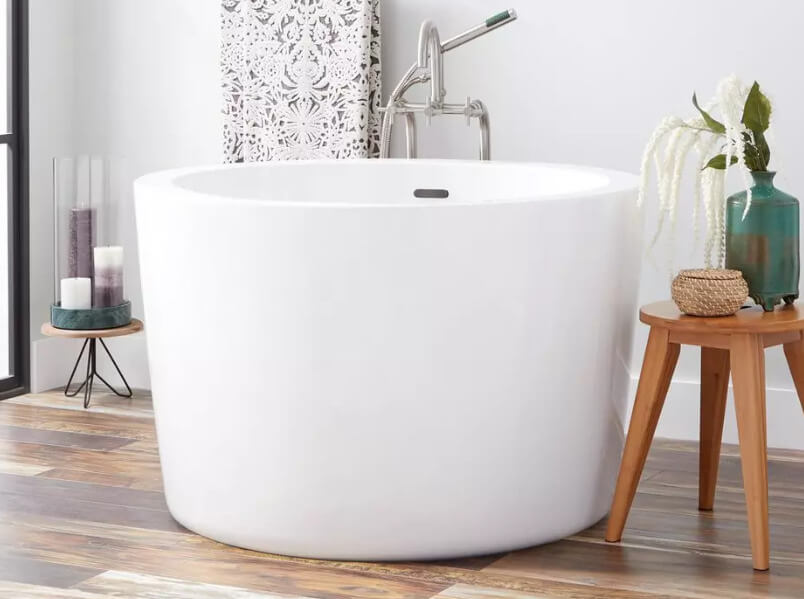
- Length: Smaller soaking tubs might start at around 48 inches (4 feet). A round Japanese soaking tub can be even smaller.
- Width: Can be as narrow as 28 inches.
- Depth: Even small soaking tubs will have a depth of 20 inches or more.
What Is the Largest a Soaking Tub Can Be?
If you want an especially wide, long, or deep (or maybe all of the above!) soaking tub, here’s what you can expect to find.
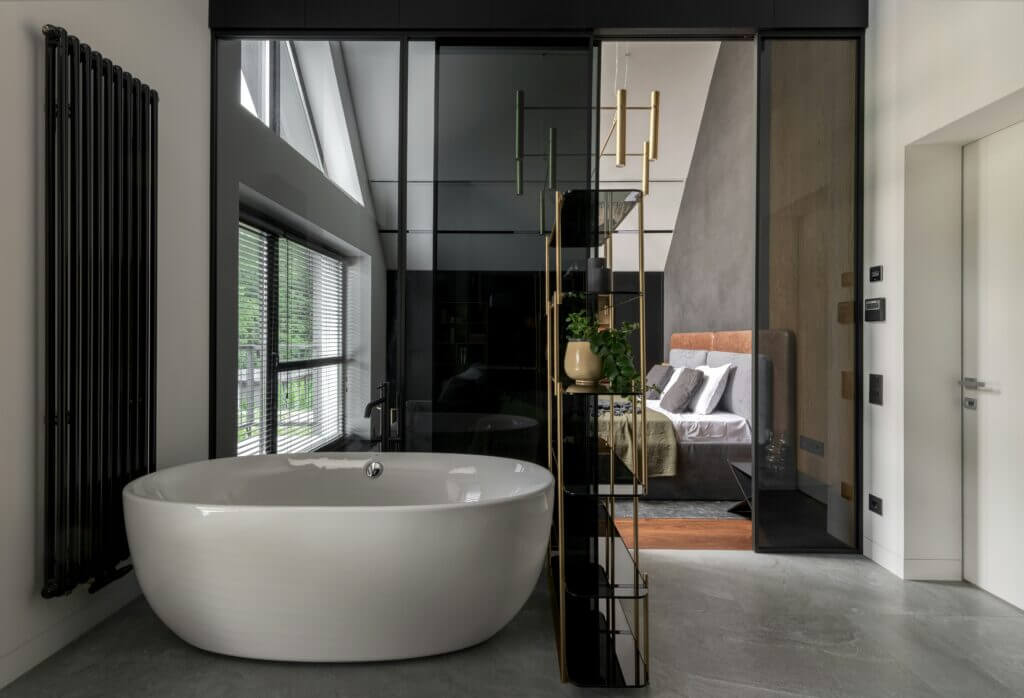
- Length: Can exceed 72 inches (6 feet).
- Width: 40 inches is the widest available from most manufacturers, but some custom options can be wider.
- Depth: Some can be deeper than 24 inches, offering a more profound soaking experience.
What’s the Deepest Soaking Tub Available?
The deepest soaking tubs available often come in depths of 27 to 32 inches. These are considered extra-deep soaking tubs and are designed to allow almost complete immersion of the body for a truly deep soak.
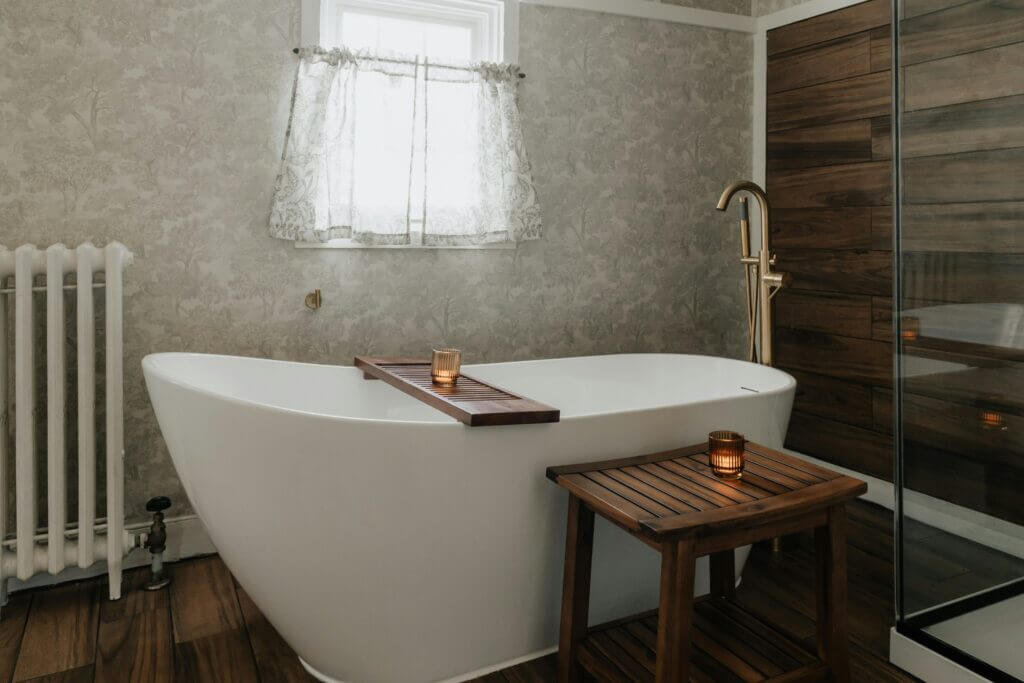
It’s important to note that while deeper options provide a more immersive experience, they also have a few drawbacks to consider:
- They require more water to fill. You’ll want to see what size water heater you currently have and if you’d need to upgrade it to have enough hot water for your new tub.
- They can be more challenging to enter and exit, especially for those with mobility issues.
- The weight of the water when the tub is filled can be significant, so ensuring that your floor can support this weight is crucial.
If you’re considering one of the deepest soaking tubs available, you should consult with a professional to ensure it’s suitable for your space and needs.
Types of Soaking Tubs
Soaking tubs come in various styles to suit different preferences, spaces, and design aesthetics. Each type offers unique features that can enhance your bathing experience. Here are the most popular types of soaking tubs.
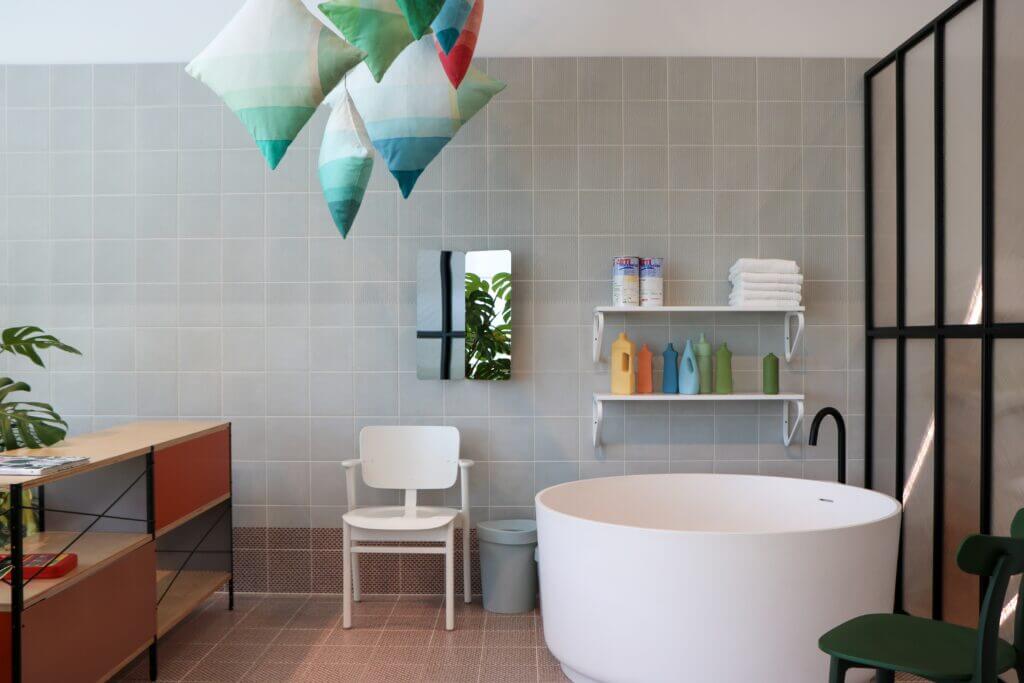
Freestanding Soaking Tubs
Freestanding tubs are a versatile and elegant choice, often serving as a statement piece in a bathroom. They can be placed anywhere with adequate plumbing and are available in modern and traditional designs. These tubs typically offer deep soaking depths for a luxurious experience. You’ll find a lot of overlap below between types of soaking tubs and types of freestanding tubs.
Clawfoot Soaking Tubs
A timeless classic, clawfoot tubs are freestanding tubs with distinctive “feet” that elevate them off the floor. They bring a vintage charm to any bathroom while providing ample depth for full-body immersion.
Japanese Soaking Tubs
Designed for compact spaces, Japanese soaking tubs are deeper than standard tubs, allowing for an upright seated position. These tubs focus on relaxation and are often made of wood, but acrylic and stone versions are also popular.
Alcove Soaking Tubs
Alcove tubs are installed between three walls, making them ideal for bathrooms with limited space. While typically associated with standard tubs, soaking versions feature deeper basins for a more immersive bath.
Drop-In Soaking Tubs
Drop-in tubs are installed into a custom-built deck or platform, offering a seamless and integrated look. They are a great option for bathrooms with unique layouts and allow for deep soaking.
Corner Soaking Tubs
Perfect for maximizing space, corner soaking tubs fit snugly into a bathroom corner. They are typically larger and often feature enough room for two people, making them a great option for shared relaxation.
Undermount Soaking Tubs
Similar to drop-in tubs, undermount tubs are installed beneath a solid surface like stone or tile, creating a sleek and streamlined appearance. These tubs are ideal for modern bathrooms with a minimalist aesthetic.
Walk-In Soaking Tubs
Designed with accessibility in mind, walk-in tubs feature a door for easy entry, making them perfect for individuals with mobility concerns. They are often equipped with seating and deep soaking depths for a comfortable and safe bathing experience. You can learn more by exploring our various guides to walk-in tubs.
Each type of soaking tub offers a unique way to transform your bathroom into a personal spa. When choosing the right soaking tub, consider your space, budget, and desired features to create the perfect oasis.
Are There Soaking Tub/Shower Combos?
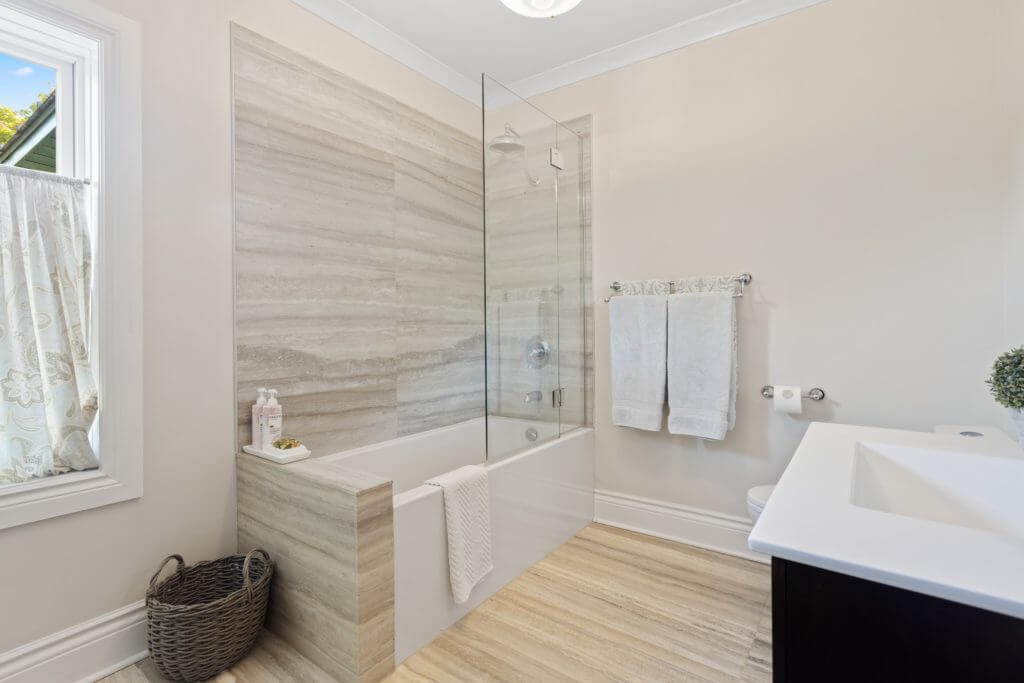
Yes, there are! However, the depth of a soaking tub in a tub/shower combo will generally be less than that of a standalone soaking tub due to practical and safety considerations. Typically, the depth might be around 20 inches, but it’s less common to find extremely deep options in a combo unit as it needs to accommodate standing and showering safely.
How Much Does a Soaking Tub Cost?
Soaking tubs can cost as little as $600 for a basic version to more than $3,500 for deeper styles and/or higher-end materials. However, the median cost for both the soaking tub and installation for homeowners ranges from $2,000 to $2,500. The cost of your own soaking tub will vary depending on the brand, size, and tub material you choose.
You can use our bathtub cost calculator to get a better sense for your project cost.
How Does Brand Impact Cost?
Luxury brands and recognizable name brands like Jacuzzi bathtubs cost more than other brands. Typically, these brands have their own networks of reputable installers as well as warranties to cover the installation and the tub itself.
You can check out our picks for best soaking tubs if you want to learn more about the brands that make the most popular tubs.
Bathtub Material and Cost
Some tub materials cost more than others. Acrylic tends to be the most affordable while high-end materials like copper are the most expensive. You can get a better sense for what material you might want and how much it may cost by looking at our guide to best bathtub materials.
Labor and Installation Cost for Soaking Tubs
Keep in mind when you’re looking at tubs in stores or online that installation and labor adds to the overall cost.
- For a basic soaking tub that uses your existing plumbing and doesn’t need additional bracing underneath it, you can expect to pay anywhere between $300 and $400 for installation.
- For a soaking tub that requires a newly built surround or foundation or unique plumbing solutions, expect to pay $1,000 and up for installation and materials.
Water Heater Costs
The water heater that was adequate for your old, standard bathtub might not work well for a soaking tub. Check with your bathroom contractor on whether you need to upgrade your water heater to support your new tub.
Additional Features
Your cost will also go up depending on which features you may want to include, like hydrotherapy, aromatherapy, and more.
Other Bathtub Options to Consider
If you decide a soaking tub isn’t for you, there are still numerous options for new bathtubs for your bathroom, all of which offer unique benefits and drawbacks.
While you explore your bathtub remodeling options, you can also browse our contractor directory to see which pros are available in your area.
Modernize can also do the work for you. Click below to answer a few questions about your project, and we’ll match you to a bathroom remodeler perfect for your project.
Compare top-rated bathroom remodel pros in your area.
Read real homeowner reviews, explore qualifications, and view promotions. Modernize makes it easy to browse professionals and find one that will be perfect for your project.



